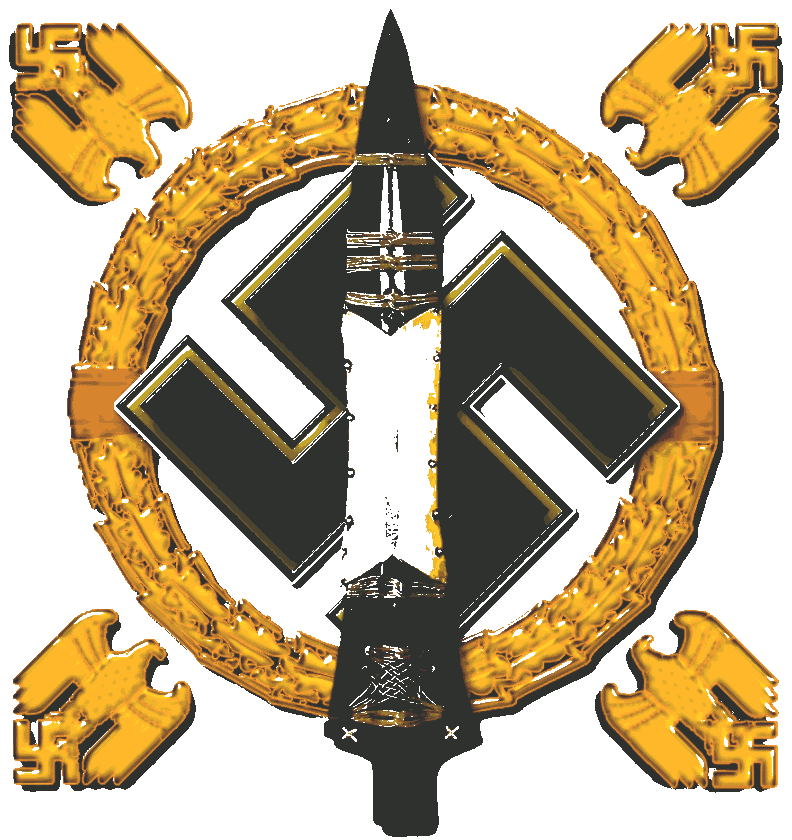
Adolf Hitler,
ruined the meaning of the swastika by surrounding a white circle with
black symbol, in against a red background - making it a political power
symbol, rather than a religious sign of goodness and spirituality.
The swastika as a symbol of prosperity and good fortune is widely distributed throughout the ancient and modern world. The word is derived from the Sanskrit svastika, meaning “conducive to well-being.” It was a favourite symbol on ancient Mesopotamian coinage. In Scandinavia the left-hand swastika was the sign for the god Thor’s hammer. The swastika also appeared in early Christian and Byzantine art (where it became known as the gammadion cross, or crux gammata, because it could be constructed from four Greek gammas [ Γ ] attached to a common base), and it occurred in South and Central America (among the Maya) and in North America (principally among the Navajo).
In India the swastika continues to be the most widely used auspicious symbol of Hindus, Jainas, and Buddhists. Among the Jainas it is the emblem of their seventh Tirthankara (saint) and is also said to remind the worshiper by its four arms of the four possible places of
rebirth - in the animal or plant world, in hell, on Earth, or in the spirit world.
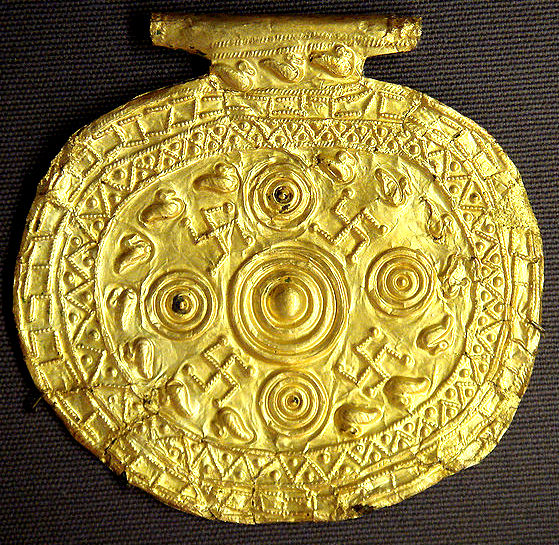
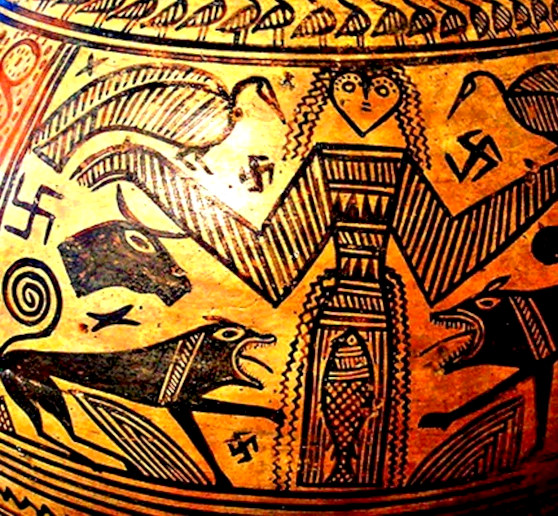
...
A clear distinction is made between the right-hand swastika, which moves in a clockwise direction, and the left-hand swastika (more correctly called the sauvastika), which moves in a counterclockwise direction. The right-hand swastika is considered a solar symbol and imitates in the rotation of its arms the course taken daily by the Sun, which in the Northern Hemisphere appears to pass from east, then south, to west. The left-hand swastika more often stands for night, the terrifying goddess Kālī, and magical practices.
In the Buddhist tradition the swastika symbolizes the feet, or the footprints, of the Buddha. It is often placed at the beginning and end of inscriptions, and modern Tibetan Buddhists use it as a clothing decoration. With the spread of Buddhism, the swastika passed into the iconography of China and Japan, where it has been used to denote plurality, abundance, prosperity, and long life.
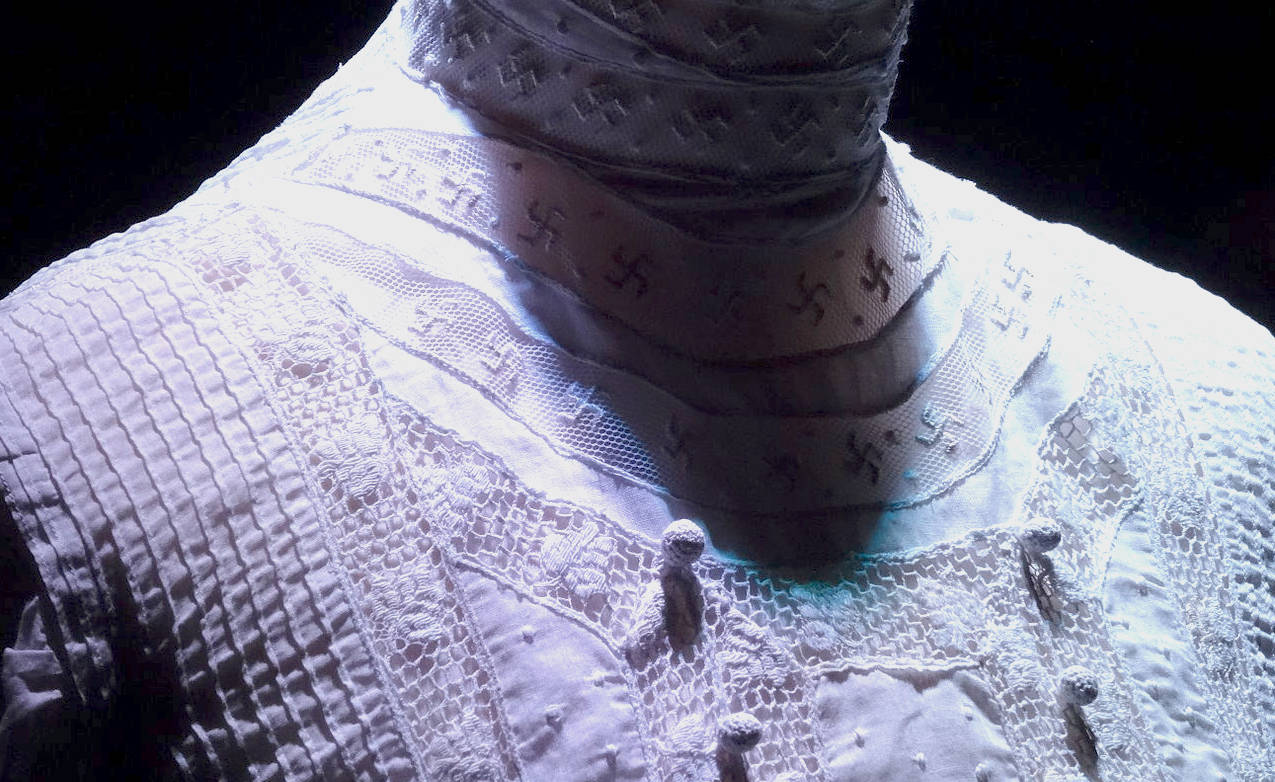
A
British colonial wedding dress with swastika embroidery to signify a happy
union.
MODERN
he swastika symbol,
卐 or
卍, is an ancient religious symbol, predominantly in various Eurasian, as well as some African and American cultures, now also widely recognized for its appropriation by the Nazi Party and by
neo-Nazis. It continues to be used as a symbol of divinity and spirituality in Indian religions, including Hinduism, Buddhism and Jainism. It generally takes the form of a cross, the arms of which are of equal length and perpendicular to the adjacent arms, each bent midway at a right angle.
In the Western world, it was a symbol of auspiciousness and good luck until the 1930s when the German
Nazi Party adopted a right-facing ('clockwise') form and used it as an emblem of the Aryan race. As a result of
World War II and the Holocaust, in the West it continues to be strongly associated with Nazism, antisemitism, white supremacism, or simply evil. As a consequence, its use in some countries, including Germany, is prohibited by law. However, the swastika remains a symbol of good luck and prosperity in Hindu, Buddhist and Jain countries such as Nepal, India, Mongolia, Sri Lanka, China and Japan, and by some peoples, such as the Navajo people of the Southwest United States. It is also commonly used in Hindu marriage ceremonies and Diwali celebrations.
ANCIENT
EGYPT
The
Ancient Egyptians knew of the swastika and used it to some degree, but had
their own symbol for life and prosperity. More particularly the Ankh,
meaning life eternal.
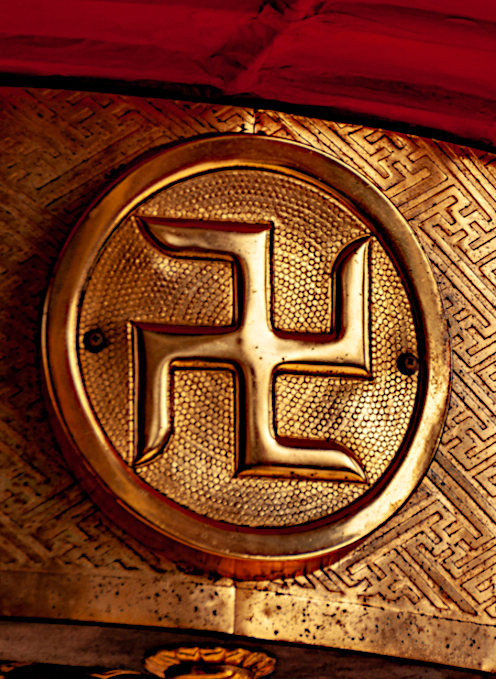
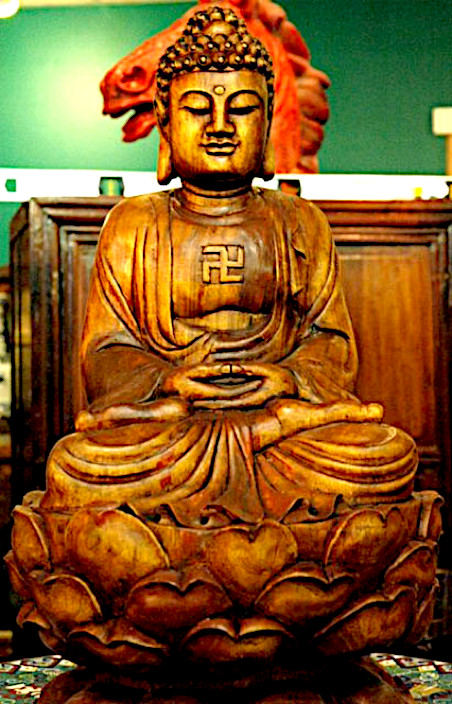

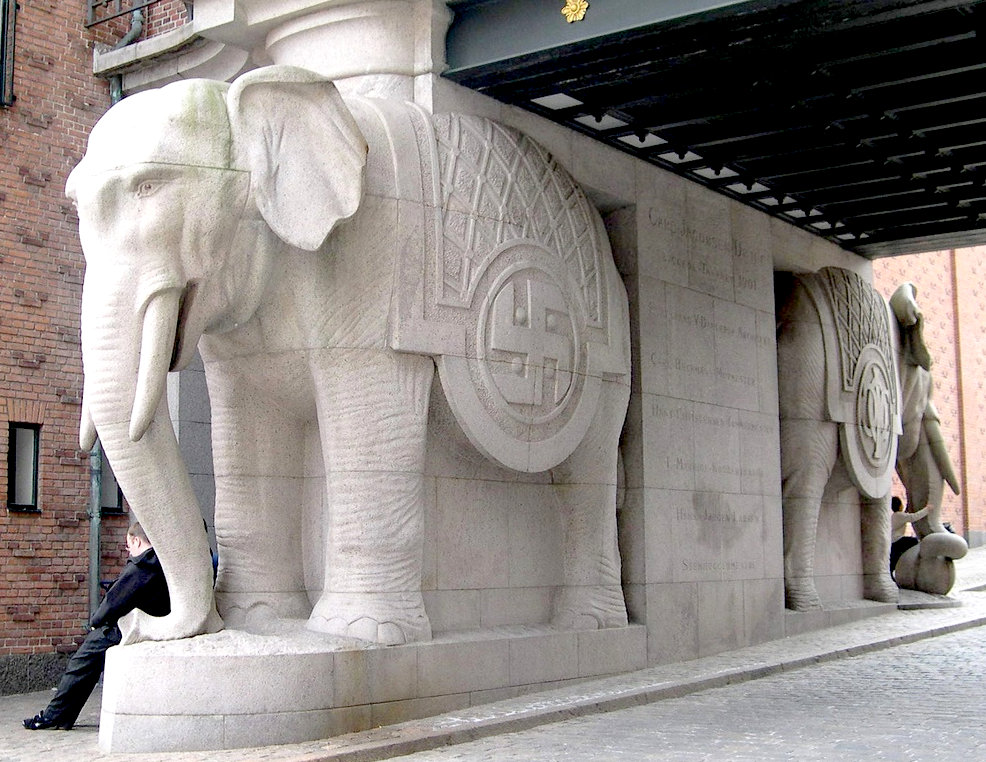
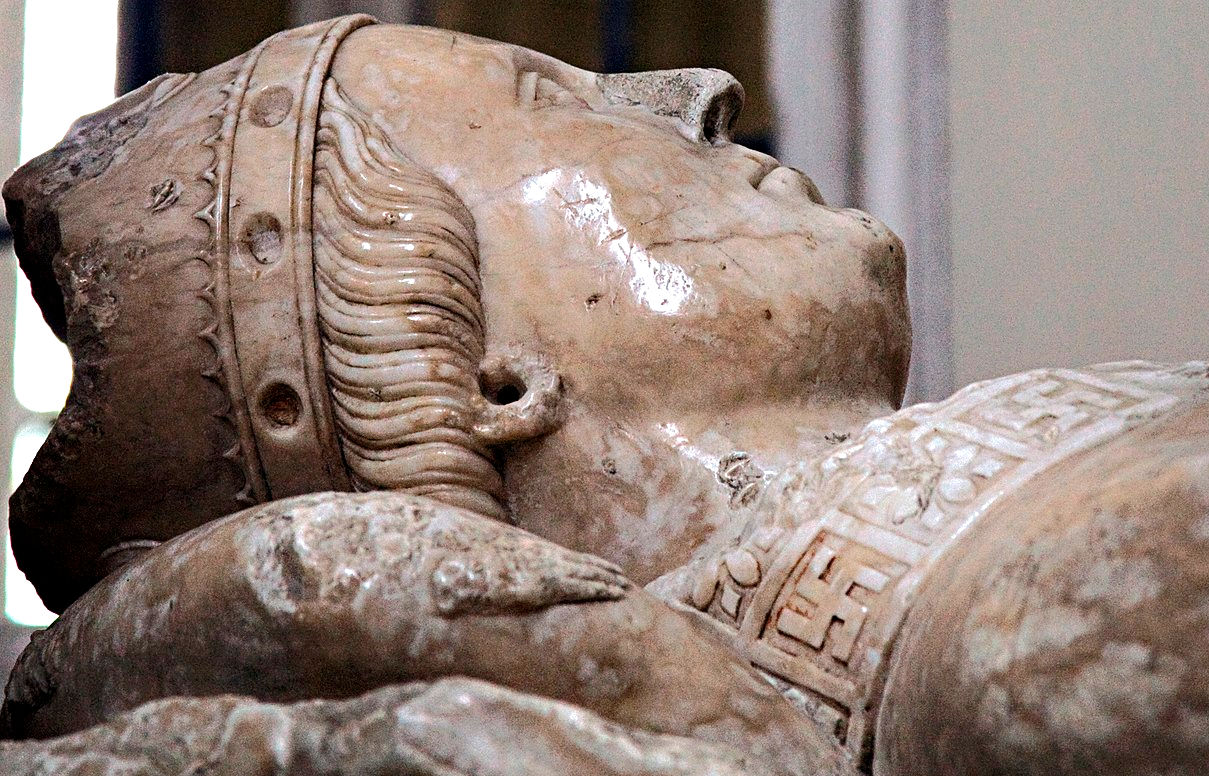
PREHISTORY
The earliest known swastika is from 10,000 BCE – part of "an intricate meander pattern of joined-up swastikas" found on a late paleolithic figurine of a bird, carved from mammoth ivory, found in Mezine, Ukraine. It has been suggested that this swastika may be a stylised picture of a stork in flight. As the carving was found near phallic objects, this may also support the idea that the pattern was a fertility symbol.
In the mountains of Iran, there are swastikas or spinning wheels inscribed on stone walls, which are estimated to be more than 7,000 years old. One instance is in Khorashad, Birjand, on the holy wall Lakh Mazar.
Mirror-image swastikas (clockwise and counter-clockwise) have been found on ceramic pottery in the Devetashka cave, Bulgaria, dated to 6,000 BCE.
Some of the earliest archaeological evidence of the swastika in the Indian subcontinent can be dated to 3,000 BCE. The investigators put forth the hypothesis that the swastika moved westward from the Indian subcontinent to Finland, Scandinavia, the Scottish Highlands and other parts of Europe. In England, neolithic or Bronze Age stone carvings of the symbol have been found on Ilkley Moor, such as the Swastika Stone.
Swastikas have also been found on pottery in archaeological digs in Africa, in the area of Kush and on pottery at the Jebel Barkal temples, in Iron Age designs of the northern Caucasus (Koban culture), and in Neolithic China in the Majiabang and Majiayao cultures.
Other Iron Age attestations of the swastika can be associated with Indo-European cultures such as the Illyrians, Indo-Iranians, Celts, Greeks, Germanic peoples and Slavs. In Sintashta culture's "Country of Towns", ancient Indo-European settlements in southern Russia, it has been found a great concentration of some of the oldest swastika patterns.
The swastika is also seen in Egypt during the Coptic period. Textile number T.231-1923 held at the V&A Museum in London includes small swastikas in its design. This piece was found at Qau-el-Kebir, near Asyut, and is dated between CE 300 and 600.
The Tierwirbel (the German for "animal whorl" or "whirl of animals") is a characteristic motif in Bronze Age Central Asia, the Eurasian Steppe, and later also in Iron Age Scythian and European (Baltic and Germanic) culture, showing rotational symmetric arrangement of an animal motif, often four birds' heads. Even wider diffusion of this "Asiatic" theme has been proposed, to the Pacific and even North America (especially Moundville).
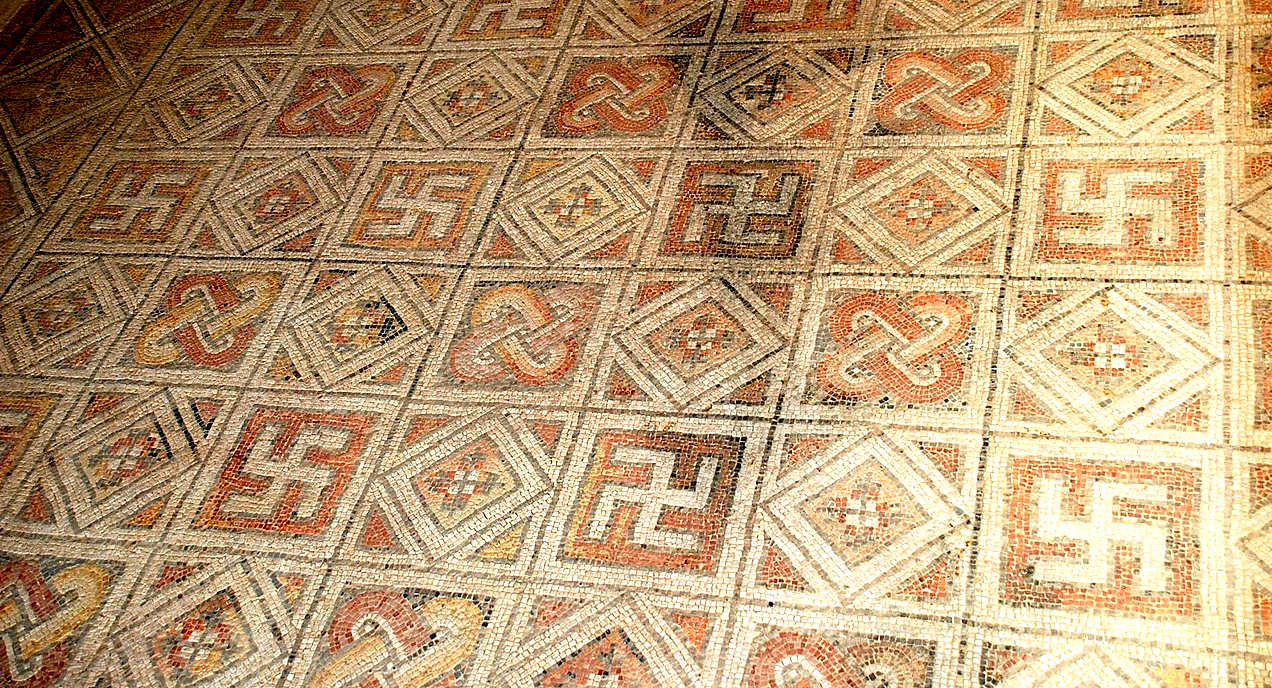
Swastikas
as a mosaic at a Roman villa in Spain
GRECO-ROMAN ANTIQUITY
Ancient Greek architectural, clothing and coin designs are replete with single or interlinking swastika motifs. There are also gold plate fibulae from the 8th century BCE decorated with an engraved swastika. Related symbols in classical Western architecture include the cross, the three-legged triskele or triskelion and the rounded lauburu. The swastika symbol is also known in these contexts by a number of names, especially gammadion, or rather the tetra-gammadion. The name gammadion comes from its being seen as being made up of four Greek gamma (Γ) letters. Ancient Greek architectural designs are replete with the interlinking symbol.
In Greco-Roman art and architecture, and in Romanesque and Gothic art in the West, isolated swastikas are relatively rare, and the swastika is more commonly found as a repeated element in a border or tessellation. The swastika often represented perpetual motion, reflecting the design of a rotating
windmill or watermill. A meander of connected swastikas makes up the large band that surrounds the Augustan Ara Pacis.
A design of interlocking swastikas is one of several tessellations on the floor of the cathedral of Amiens, France. A border of linked swastikas was a common Roman architectural motif, and can be seen in more recent buildings as a neoclassical element. A swastika border is one form of meander, and the individual swastikas in such a border are sometimes called Greek keys. There have also been swastikas found on the floors of Pompeii.
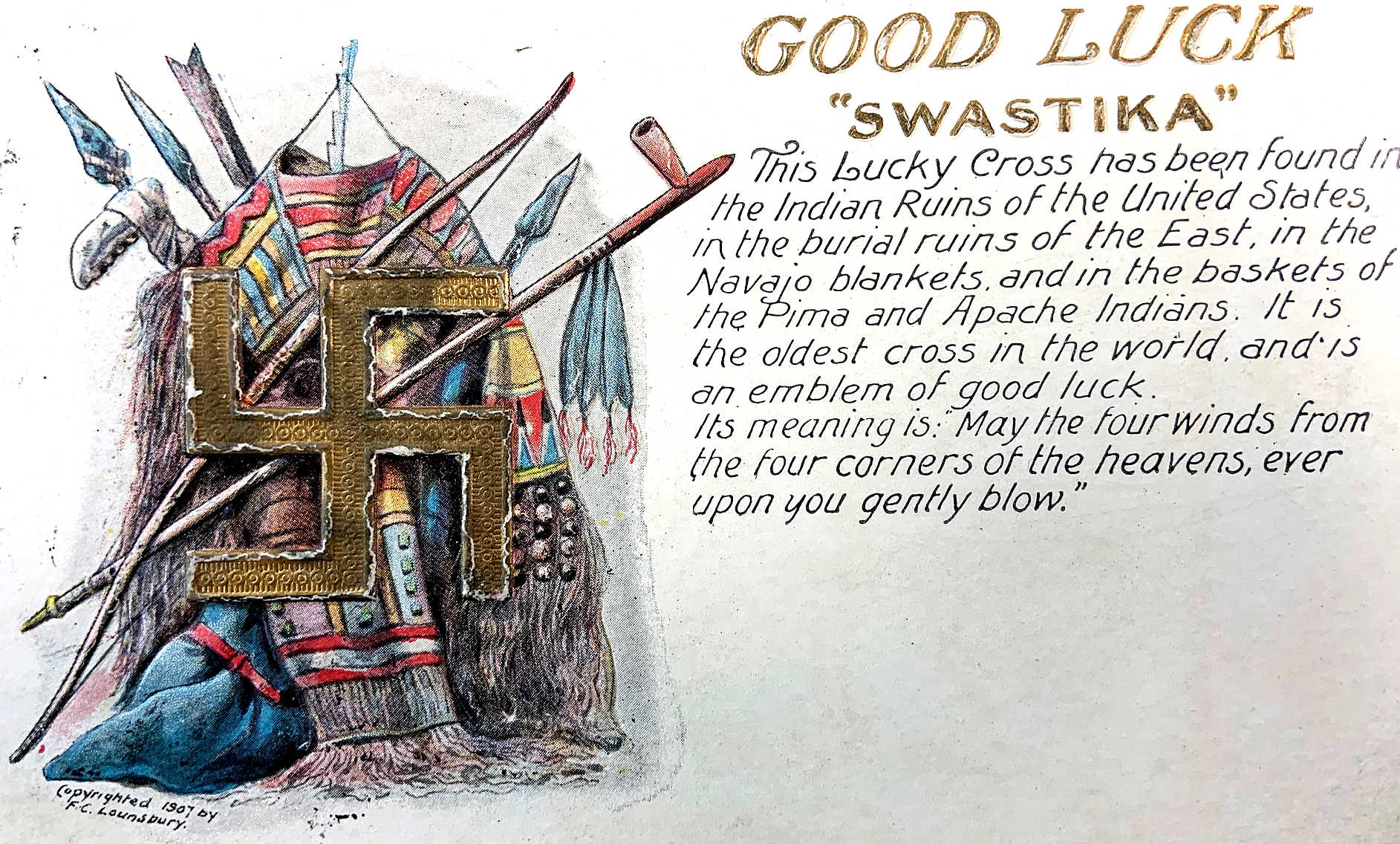
Swastika
as a lucky cross found in the burial ruins of Navajo blankets and baskets of
the Pima and Apache Indians. It is held to be an emblem of good luck.
Meaning: "May the four winds from the four corners of the heavens, ever
upon you gently blow."
FOUR WINDS
In Native American culture, particularly among the Pima people of Arizona, the swastika is a symbol of the four winds. Anthropologist Frank Hamilton Cushing noted that among the Pima the symbol of the four winds is made from a cross with the four curved arms (similar to a broken sun cross), and concludes "the right-angle swastika is primarily a representation of the circle of the four wind gods standing at the head of their trails, or directions."
No definitive history about its origin is available, but the earliest evidence is found in Indus Valley Civilization where it is used in ornaments. The other pieces of evidence found are:
1. The ancient city of Troy.
2. The iron age Koban culture.
3. In pre-Christian Europe and folk culture.
4. In ancient Greek designs.
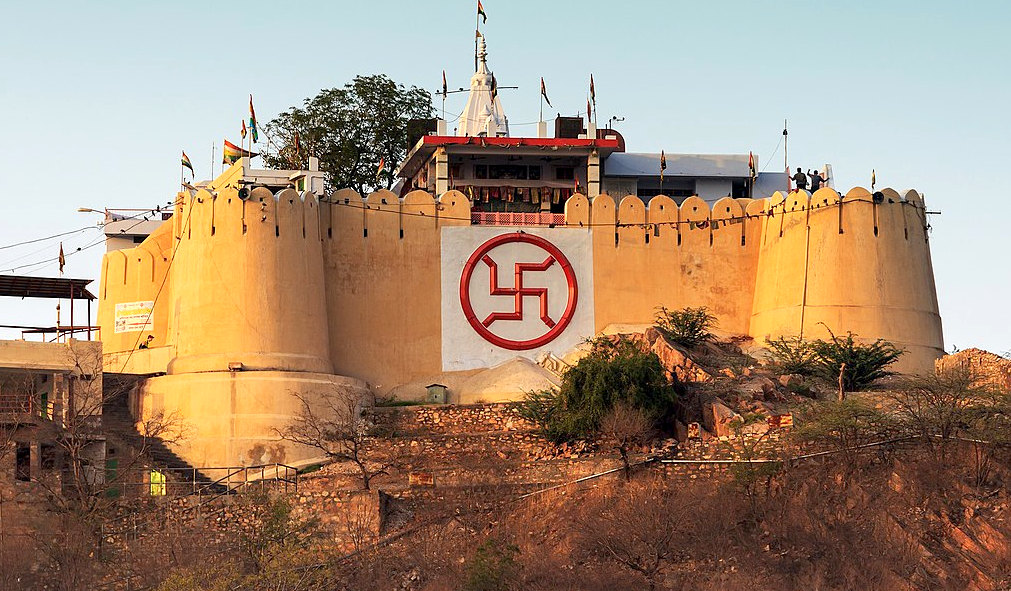
SWASTIKA IN HINDUISM
It is an important Hindu symbol used on many auspicious occasions, like puja, marriages, Vastushanti, etc. The swastika is one of the 108 symbols of Lord Vishnu. As it is considered good luck, it is drawn on the object with Kumkum at the start of the ritual.
Swastika on Vehicles:
Some people stick swastikas made up of radium on their vehicles for good luck. On some occasions like Gudhipadawa, Dassera, Hindus wash and do puja of their vehicles. On this occasion, a swastika made up of Kumkum is drawn on the front side of the vehicle.
Swastika on Clothes:
Some people use it to decorate their clothes as well as to bring good luck. There are several designs available to be printed on clothes like T-shirts, shirts, Punjabi dresses, etc.
Swastika on the Hands of Deities:
Some deities like Ganesha, Vishnu, and others have been depicted as having it on the palms of their hands.
Swastika in Palmistry:
If you have a swastika in the center of your palm, it is believed that you would live like a king as it is considered a very auspicious sign.
Swastika in Rituals:
Hindus do a ceremony called Vastushanti before they enter a new house. In this ceremony, a swastika of kumkum is drawn on the walls of the house. In Kalash Puja, it is drawn on the Kalash.
SPELLING
Thousands of people search for informtion on the Internet. For that, they use different spellings of it, or type it incorrectly as follows:
Swastica, Swastic, Swaztika, Swatstika, Swasthik, Swatsika, Swatika, Swasticka, Swaztica, Swasika, Swatik, Swatstica, Swatica, Swatiska, Swastka, Swatzika, Swastaka, Swasthika, Swastick, Sawastik, Swasticker, Sawastika, Swastiker, Swatikas, Swatsticka, Swashtika, Sastik, Swazstika, Shwashtica, Zuastica, Swatsica, Swassticka, Swarstika, Swashika, Swasitka, Schwastica, Sastica, Suastic, Swastikia, Swastike, Sawastica, Swatska, Swastkia, Swasica,
Swostica.
A
- Z OF NAZI GERMANY
|











